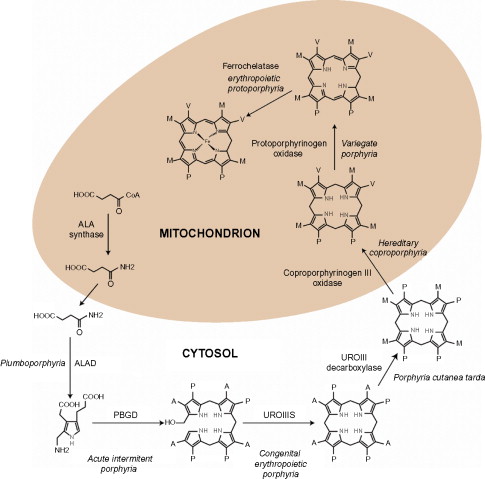Description
Porphobilinogen (PBG) is an intermediate compound in the heme biosynthesis pathway. Elevated levels of PBG in urine are indicative of certain porphyrias, which are a group of metabolic disorders characterized by abnormalities in heme synthesis. Here’s some key information about qualitative urine testing for PBG:
- Purpose: Qualitative urine testing for PBG is used to screen for the presence of PBG in urine. Elevated levels of PBG can suggest the presence of acute intermittent porphyria (AIP) or other types of porphyria.
- Methodology: Qualitative testing for PBG typically involves the use of chemical reagents that react with PBG to produce a characteristic color change. One commonly used test is the Watson-Schwartz test, which involves the addition of Ehrlich’s reagent to urine samples containing PBG. The presence of PBG causes a pink-to-red color change in the solution.
- Interpretation of Results:
- Positive Test: A positive qualitative test for PBG indicates the presence of PBG in the urine sample. This may suggest the possibility of AIP or other porphyrias.
- Negative Test: A negative test does not completely rule out the possibility of porphyria, as PBG levels can fluctuate and may not always be detectable, especially during asymptomatic periods.
- Clinical Significance:
- Acute Intermittent Porphyria (AIP): AIP is the most common type of acute porphyria and is characterized by intermittent attacks of abdominal pain, neuropsychiatric symptoms, and autonomic dysfunction. Diagnosis of AIP often relies on a combination of clinical features, biochemical testing, and genetic analysis.
- Other Porphyrias: Elevated PBG levels can also occur in other types of porphyria, including hereditary coproporphyria (HCP) and variegate porphyria (VP). However, the pattern of symptoms and biochemical abnormalities may differ between different types of porphyria.
- Limitations: Qualitative urine testing for PBG is a screening test and may not provide definitive diagnosis. Confirmation of porphyria and differentiation between different types of porphyria typically require additional testing, such as quantitative measurement of PBG and other porphyrin precursors, as well as genetic testing.
- Follow-Up Testing: In cases of suspected porphyria based on qualitative urine testing for PBG, further evaluation by a specialist, such as a hematologist or biochemical geneticist, is recommended. This may include quantitative urine testing, serum testing, genetic testing, and other diagnostic modalities to confirm the diagnosis and guide management.
Overall, qualitative urine testing for PBG is a useful initial screening tool for suspected porphyria, but it should be interpreted in conjunction with clinical findings and additional laboratory testing for accurate diagnosis and management.



Reviews
There are no reviews yet.